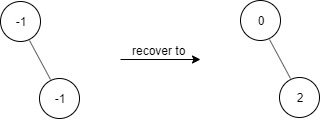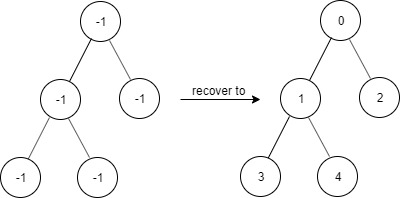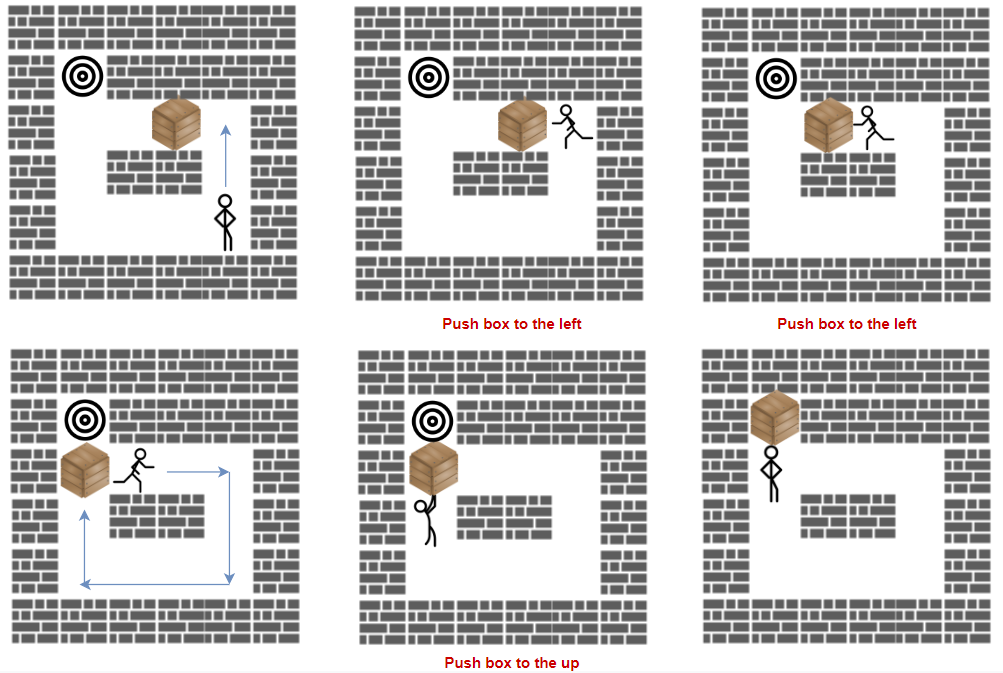Weekly Contest 163
lihe opened this issue · comments
5263. Shift 2D Grid
Easy
Given a 2D grid of size n * m and an integer k. You need to shift the grid k times.
In one shift operation:
- Element at
grid[i][j]becomes atgrid[i][j + 1]. - Element at
grid[i][m - 1]becomes atgrid[i + 1][0]. - Element at
grid[n - 1][m - 1]becomes atgrid[0][0].
Return the 2D grid after applying shift operation k times.
Example 1:
Input: grid = [[1,2,3],[4,5,6],[7,8,9]], k = 1
Output: [[9,1,2],[3,4,5],[6,7,8]]
Example 2:
Input: grid = [[3,8,1,9],[19,7,2,5],[4,6,11,10],[12,0,21,13]], k = 4
Output: [[12,0,21,13],[3,8,1,9],[19,7,2,5],[4,6,11,10]]
Example 3:
Input: grid = [[1,2,3],[4,5,6],[7,8,9]], k = 9
Output: [[1,2,3],[4,5,6],[7,8,9]]
Constraints:
1 <= grid.length <= 501 <= grid[i].length <= 50-1000 <= grid[i][j] <= 10000 <= k <= 100
class Solution {
public:
vector<vector<int>> shiftGrid(vector<vector<int>>& grid, int k) {
if(k == 0){
return grid;
}
int n = grid.size();
int m = grid[0].size();
vector<vector<int>> result(n, vector<int>(m, 0));
for(int cnt = 0; cnt < k; cnt++){
for(int i = 0; i < n; i++){
for(int j = 1; j < m; j++){
result[i][j] = grid[i][j - 1];
}
}
for(int i = 1; i < n; i++){
result[i][0] = grid[i - 1][m - 1];
}
result[0][0] = grid[n - 1][m - 1];
grid = result;
}
return result;
}
};5264. Find Elements in a Contaminated Binary Tree
Medium
Given a binary tree with the following rules:
root.val == 0- If
treeNode.val == xandtreeNode.left != null, thentreeNode.left.val == 2 * x + 1 - If
treeNode.val == xandtreeNode.right != null, thentreeNode.right.val == 2 * x + 2
Now the binary tree is contaminated, which means all treeNode.val have been changed to -1.
You need to first recover the binary tree and then implement the FindElements class:
FindElements(TreeNode* root)Initializes the object with a contamined binary tree, you need to recover it first.bool find(int target)Return if thetargetvalue exists in the recovered binary tree.
Example 1:
Input
["FindElements","find","find"]
[[[-1,null,-1]],[1],[2]]
Output
[null,false,true]
Explanation
FindElements findElements = new FindElements([-1,null,-1]);
findElements.find(1); // return False
findElements.find(2); // return True
Example 2:
Input
["FindElements","find","find","find"]
[[[-1,-1,-1,-1,-1]],[1],[3],[5]]
Output
[null,true,true,false]
Explanation
FindElements findElements = new FindElements([-1,-1,-1,-1,-1]);
findElements.find(1); // return True
findElements.find(3); // return True
findElements.find(5); // return False
Example 3:
Input
["FindElements","find","find","find","find"]
[[[-1,null,-1,-1,null,-1]],[2],[3],[4],[5]]
Output
[null,true,false,false,true]
Explanation
FindElements findElements = new FindElements([-1,null,-1,-1,null,-1]);
findElements.find(2); // return True
findElements.find(3); // return False
findElements.find(4); // return False
findElements.find(5); // return True
Constraints:
TreeNode.val == -1- The height of the binary tree is less than or equal to
20 - The total number of nodes is between
[1, 10^4] - Total calls of
find()is between[1, 10^4] 0 <= target <= 10^6
5265. Greatest Sum Divisible by Three
Given an array nums of integers, we need to find the maximum possible sum of elements of the array such that it is divisible by three.
Example 1:
Input: nums = [3,6,5,1,8]
Output: 18
Explanation: Pick numbers 3, 6, 1 and 8 their sum is 18 (maximum sum divisible by 3).
Example 2:
Input: nums = [4]
Output: 0
Explanation: Since 4 is not divisible by 3, do not pick any number.
Example 3:
Input: nums = [1,2,3,4,4]
Output: 12
Explanation: Pick numbers 1, 3, 4 and 4 their sum is 12 (maximum sum divisible by 3).。
Constraints:
1 <= nums.length <= 4 * 10^41 <= nums[i] <= 10^4
5266. Minimum Moves to Move a Box to Their Target Location
Hard
Storekeeper is a game, in which the player pushes boxes around in a warehouse, trying to get them to target locations.
The game is represented by a grid of size n*``m, where each element is a wall, floor or a box.
Your task is move the box 'B' to the target position 'T' under the following rules:
- Player is represented by character
'S'and can move up, down, left, right in thegridif its a floor (empy cell). - Floor is represented by character
'.'that means free cell to walk. - Wall is represented by character
'#'that means obstacle (impossible to walk there). - There is only one box
'B'and one target cell'T'in thegrid. - The box can be moved to an adjacent free cell by standing next to the box and then moving in the direction of the box. This is a push.
- The player cannot walk through the box.
Return the minimum number of pushes to move the box to the target. If there is no way to reach the target, return -1.
Example 1:
Input: grid = [["#","#","#","#","#","#"],
["#","T","#","#","#","#"],
["#",".",".","B",".","#"],
["#",".","#","#",".","#"],
["#",".",".",".","S","#"],
["#","#","#","#","#","#"]]
Output: 3
Explanation: We return only the number of times the box is pushed.
Example 2:
Input: grid = [["#","#","#","#","#","#"],
["#","T","#","#","#","#"],
["#",".",".","B",".","#"],
["#","#","#","#",".","#"],
["#",".",".",".","S","#"],
["#","#","#","#","#","#"]]
Output: -1
Example 3:
Input: grid = [["#","#","#","#","#","#"],
["#","T",".",".","#","#"],
["#",".","#","B",".","#"],
["#",".",".",".",".","#"],
["#",".",".",".","S","#"],
["#","#","#","#","#","#"]]
Output: 5
Explanation: push the box down, left, left, up and up.
Example 4:
Input: grid = [["#","#","#","#","#","#","#"],
["#","S","#",".","B","T","#"],
["#","#","#","#","#","#","#"]]
Output: -1
Constraints:
1 <= grid.length <= 201 <= grid[i].length <= 20gridcontains only characters'.','#','S','T', or'B'.- There is only one character
'S','B'and'T'in thegrid.





